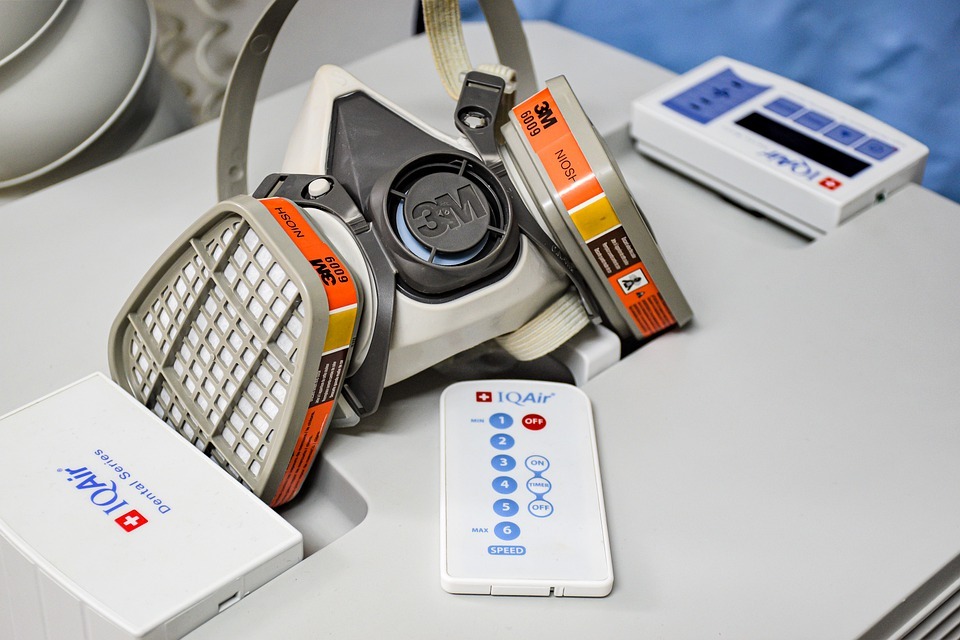An estimated 30 minutes to 2 hours is the time frame for an air purifier to clean a room. However, several factors are considered for the estimate, including the air purifier’s purifying coverage, the room size, and the fan’s speed the unit will be running on.
One of the effective devices one can use to clean up the indoor air is the air purifier. The machine comes in handy in picking up harmful pollutants from the air in the interior ensuring breathing is smoother. The excitement of purchasing the air purifier, unpacking, turning it on then waiting for its practical use. At the same time, it’s almost impossible to trust the purifier is actually working. The pollutants supposed to be eliminated are not visible to the naked eye. First, it’s important to understand how air purifiers work.
How do air purifiers work?
Depending on the air purifier’s make and model, it consists of a filter or multiple filters and a fan that sucks in air and helps release the filtered air on the other end. As the air passes through the filters, pollutants and suspended particles are trapped, and only clean air is allowed back into the room. The filters are mostly mesh, paper, or fiberglass and require regular placement and alignment for efficiency.
This implies that apart from the purifier’s cost, the equipment’s operating cost should be considered, including filter replacements.
What does the air purifier clean?
The enticement of an air purifier is exciting, but what does it get rid of actually? Indoor air can have levels of pollutants greater than the air outside, probably due to the confinement and lack of airflow. Air purifiers aim at containing the threat caused by pollution outside and some indoor activities, but some purifiers don’t live up to the hype.
The air purifier cleanses the air from odors, smoke, dust, pollen, and pet dander. This, however, does not guarantee that the air purifier will clean all the air in the room and get rid of all pollutants. The kind of filters will determine what pollutants will be removed.
Most purifiers get rid of medium and large particles like dust, but fine particles like bacteria are where the difference is. Purifiers with High-Efficiency Particulate Air (HEPA) filter combat the finer particles and differ in make and model.
Testing your purifier’s airflow
Seeing is believing, but it is impossible seeing the pollutants the air purifier is getting rid of. One way of checking if your purifier is working is checking the airflow out of the purifier.
The air fan sucks in the air then expels it out from the other side contaminant free. If the purifier is not blowing any air out, it means there’s something faulty about it.
The fan should be working hard and noisy, and this could indicate the status of your purifier. If it gets louder, this implies the filters need replacement or a mechanical problem. If it’s silent, it means the purifier is not pulling in the air.
Regular checking of the filters
Filters are essentials as they enable the air purifier to perform its function. The filters might get clogged up with pollutants such as pollen and mold and call for change in the long run. A bad filter will affect the work efficiency of the purifier.
Some air purifiers have timers that indicate when the filters need to be changed, but it’s advisable to check manually. The air purifier has more than one filter hence necessitating the need to check all of the filters and change regularly. Discolorations, black spots, or the filter appearing dirty calls for replacement. The purifier will start blowing back the trapped pollutants back into the air, becoming a source of pollution itself.
Things to look for in an air purifier
- The size of the room the air purifier can clean.
- Air Change per Hour(ACH) rating. The rating determines the number of times the purifier can filter the entire air volume in the room.
- HEPA filter rating.
- Noise level of the fan.
- Energy consumption to determine the operating cost of the purifier.
Finding a great air filter should not be a walk in the park, but the search has been narrowed to the market’s best.
Conclusion
For someone prone to allergies or asthma, an air purifier with a HEPA filter will come in handy as it will ensure it gets rid of contaminants in the air. It is advised to address the sources of pollution indoors and ensure the house is well ventilated. Supplementing the air purifier will help maximize efficiency by regularly changing the air filters, keeping windows open, and minimizing candles or smoking in the house.

